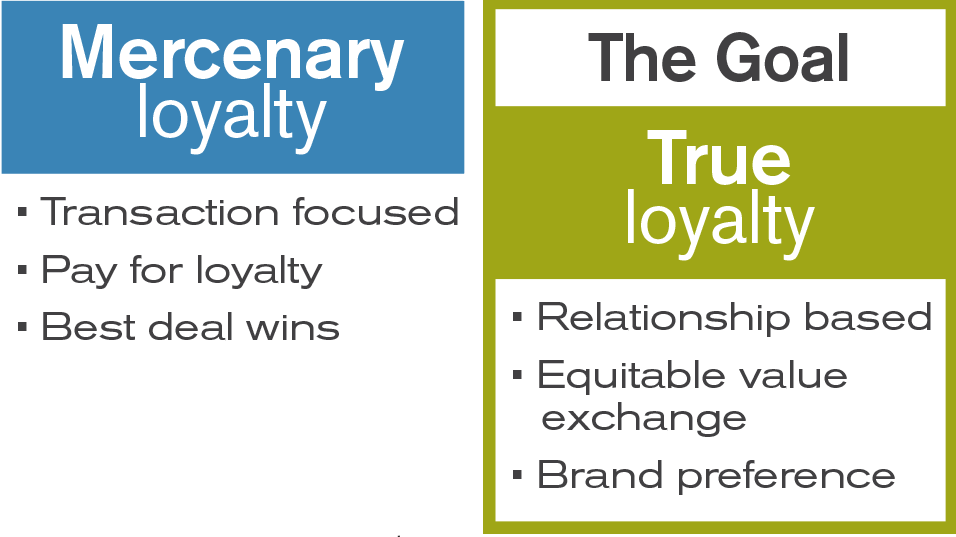In the customer experience, true loyalty lies beyond the transaction.
Nov 10, 2020
Written by: Jim Bergeson, Vice President, Customer Engagement, BI WORLDWIDE
(View Author Bio)
Most customer loyalty programs today are primarily focused on the transaction, using discounts to get attention and prompt a purchase. But how likely is a customer to stay with a brand, product or service if the customer relationship is built solely on price?
Scroll Down
In an article I recently read, it noted the average American household today is enrolled in nearly 30 different customer loyalty programs. The article also pointed out that people are only “active” in four or five of them.
So, what drives people to be active or really engaged in a customer loyalty program?
When analyzing most loyalty programs today, you will find they are primarily
focused on the transaction. Discounting a product or service is often the tactic used to capture the customer’s attention and attract them to buy. Discounting might be good for acquisition but is it really a good customer retention strategy? What happens when a competitor offers a better discount? How likely is a customer to stay with a brand, product or service if the customer relationship is built solely on price?
Mercenary loyalty vs. true loyalty
Paying for loyalty, or where the best deal wins, is what we refer to as mercenary loyalty. Again, that seems to be what most customer loyalty programs are offering today and probably the primary reason why so many of those loyalty programs eventually fail. In reality, true loyalty lies beyond the transaction. Of course, the transaction itself is important and vital to the success of any business –but it’s not what necessarily drives customer loyalty.

Loyalty is built by creating a customer relationship. Understanding the unique lifecycle of your product or service, where critical touchpoints or milestones occur, is where the customer relationship is defined. What you do and how you interact at those touchpoints and milestones will mold or frame the relationship you are likely to have with your customers. Those touchpoints or milestones beyond the transaction offer the opportunity to differentiate yourself from your competition and make your relationship more than just about price. Service, appreciation, recognition, training or educating, are all things that can be applied to building your customer relationships. These add value for a customer and can instill a real feeling of loyalty to your brand, product or service.
Think about what you’re doing beyond the transaction with your customers. Is your customer experience special in any way? Do you go above and beyond what your competitors offer in any way outside of the price of your product or service?
Equitable value exchange
Foundational to the concept of true loyalty and to designing a successful customer loyalty program is what we call the “equitable value exchange.” The concept is simple—is the reward for what you might be asking a customer to do equal to the effort required? For example, if we were executing a new product launch and we asked a customer to watch the product video requiring a minute or two of their time, the ask is fairly minimal. The reward might be a simple thank you for watching or maybe a special offer on their first purchase.
On the other hand, let’s say you were asking a customer to switch their checking account. That would be a substantially bigger ask and would take some significant effort by the customer to consider and make the change. The reward for this behavior would have to be fairly large; banks often offer $100 to $200 deposited in your new account should you act.
All too often we see reward programs where the “ask” is far greater than the “reward” and thus, the customer engagement is low. The reward is not commensurate with the effort or behavior required by the customer. The equitable value exchange is not in balance.
The formula for creating a true loyalty program is fairly simple. Build a customer relationship beyond the transaction. And, make sure the value exchange with your customers is equitable. That will drive your brand preference and ultimately create lasting, loyal customers.
The best way to get started is to get in touch


















